Feel accomplished making your very own authentic Thai green curry paste. This recipe couldn’t be simpler – toast and grind aromatic spices, then throw it all in a blender. Move over store-bought – this is batchable, freezable and ready in 15 minutes.
Once it’s blended it’s ready to go straight into your Thai green chicken curry for dinner!
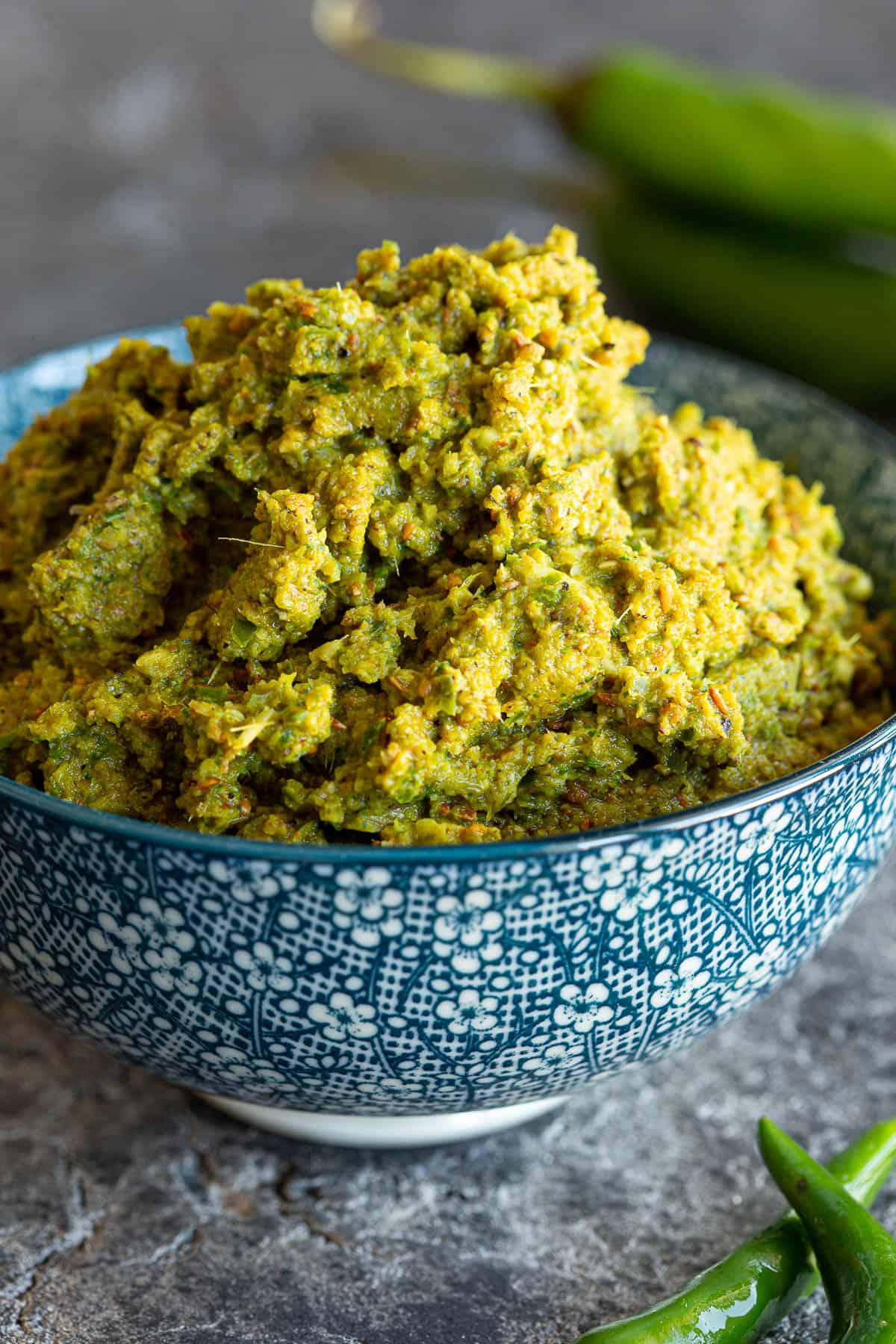
In this post you’ll learn
Made fresh – so you know what’s in it
Made with fresh, natural ingredients, there’s no artificial ingredients or preservatives to worry about. Plus you can can easily adapt the recipe to tweak the flavour and heat level or even make it vegan friendly if you need.
We love using a food processor to make it quickly and effortlessly, but it’s also great fun to crack out your mortar and pestle for the traditional curry paste making experience.
Related: Thai Panang Curry Paste / Base Genep Spice Paste
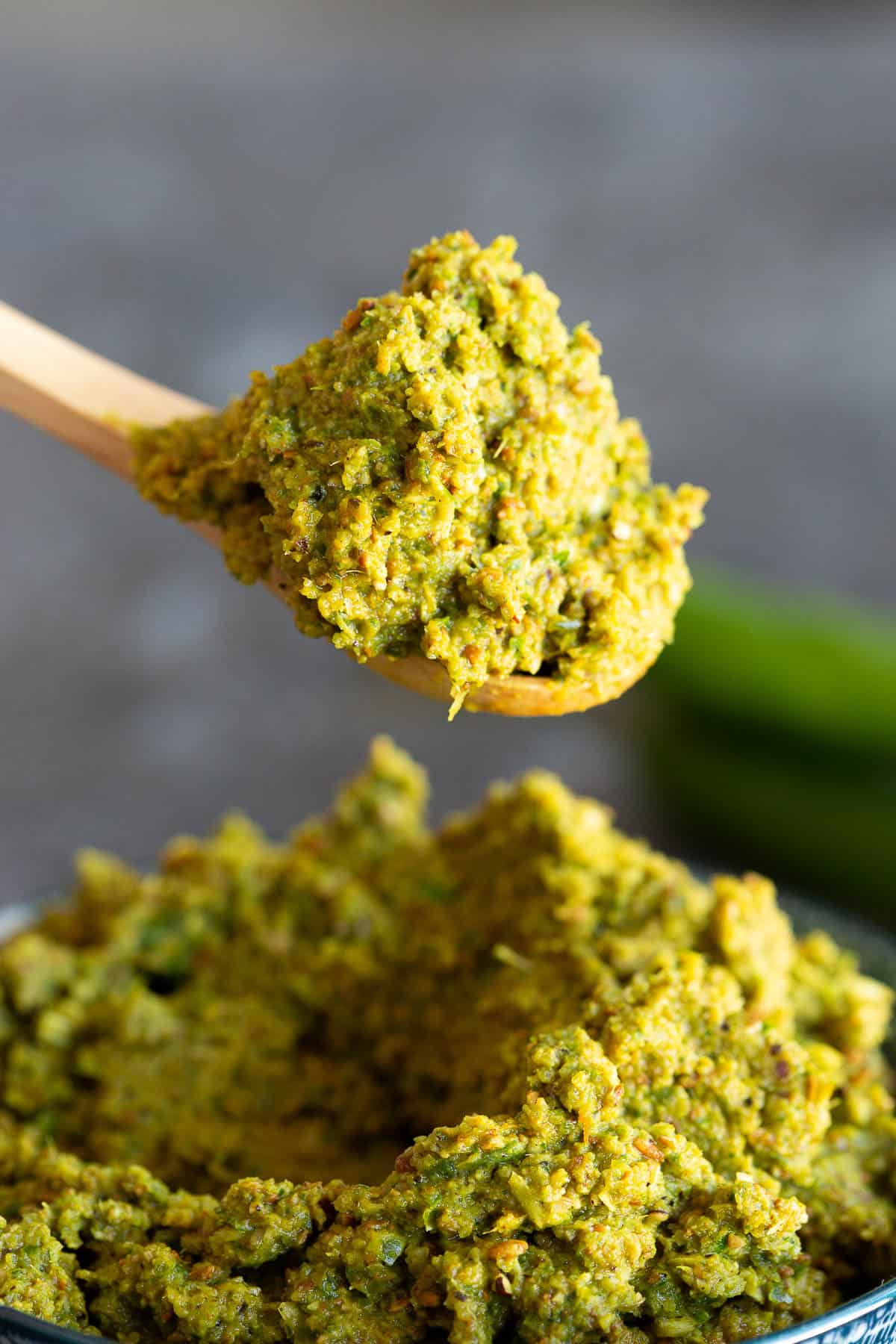
Finally an easy homemade green curry paste!
I (Sarah) grew up on green curry for dinner. Luckily Mum and Dad had neighbours that introduced us to the world of spice. Being able to make it at home so easily has now made it both a blessing and a curse.
A blessing because it’s absolutely out of this world on the flavour scale, and a curse because our friends and family now keep hitting us up for all the batches we’ve been making lately!
Warning – once you make this, you won’t be able to go back to the pre-made stuff, it might even ruin your local restaurant order (sorry, not sorry!).
Ingredients & Substitutes
Tip: Sometimes the hardest part about making curry pastes from scratch is finding the ingredients! If you can’t get them at your local supermarket, check out your nearest Asian grocery store.
- Chillies – Today we’re using equal amounts of long green chillies and extra spicy Thai green bird’s eye chillies. We deseed them first to tone down the heat to our tastes. You can easily adjust the spice level by using more or less of either version, or keeping in the seeds for an extra spicy kick.
- Lemongrass – We’re using the stems (the white base, around 10 cm / 4 inches in length),
- Galangal – This is sometimes found at your local supermarket, if not at an Asian grocer. It looks like ginger, but is much harder and a slightly different flavour. Sub with fresh ginger if it’s more easily accessible where you live.
- Turmeric – Try and source fresh, our local food markets have them most of the time. Sub with powdered if you can’t find.
- Coriander / cilantro – You want the leaves AND roots. They’re more likely to have roots on at an Asian supermarket.
- Thai basil leaves – We’re lucky enough to source this at most of our local or Asian supermarkets, if not fresh you may be able to source in a jar.
- Spices – Whole cumin seeds, coriander seeds and black peppercorns (sub white peppercorns) are dry toasted first to bring out their rich flavours, then ground into a fine powder. Sub with ground spices if you need, but only toast them for a 15-20 seconds to avoid burning.
- Makrut / Kaffir Lime – You’ll need both the fresh leaves and fruit rind for this recipe. Makrut is the Thai name for this ingredient (and out of respect, is the best name to use), but in Australia and elsewhere it’s often labelled as kaffir lime or Thai lime. If you can’t source it, just leave it out or add the zest of one regular lime. The flavour won’t be the same, but it will get you closer.
- Shrimp Paste / Belacan / Terasi – This funky and pungent ingredient is essential to bring that classic umami flavour to the curry paste. We usually use Jeeny’s brand. Sub fish sauce in the first instance, or with 1 tsp of salt or vegan fysh sauce if you want to make a vegan friendly curry paste.
- Shallots – Also called eshalots / French shallots or gold shallot depending on where you are. These are the small brown skinned onions that are purple on the inside – not spring onion / green onions.
- Garlic Cloves – It’s not a good curry paste without fresh garlic! We prefer purple Australian garlic (or whatever is local to you) rather than the Chinese garlic. Again fresh over jarred for best results here.
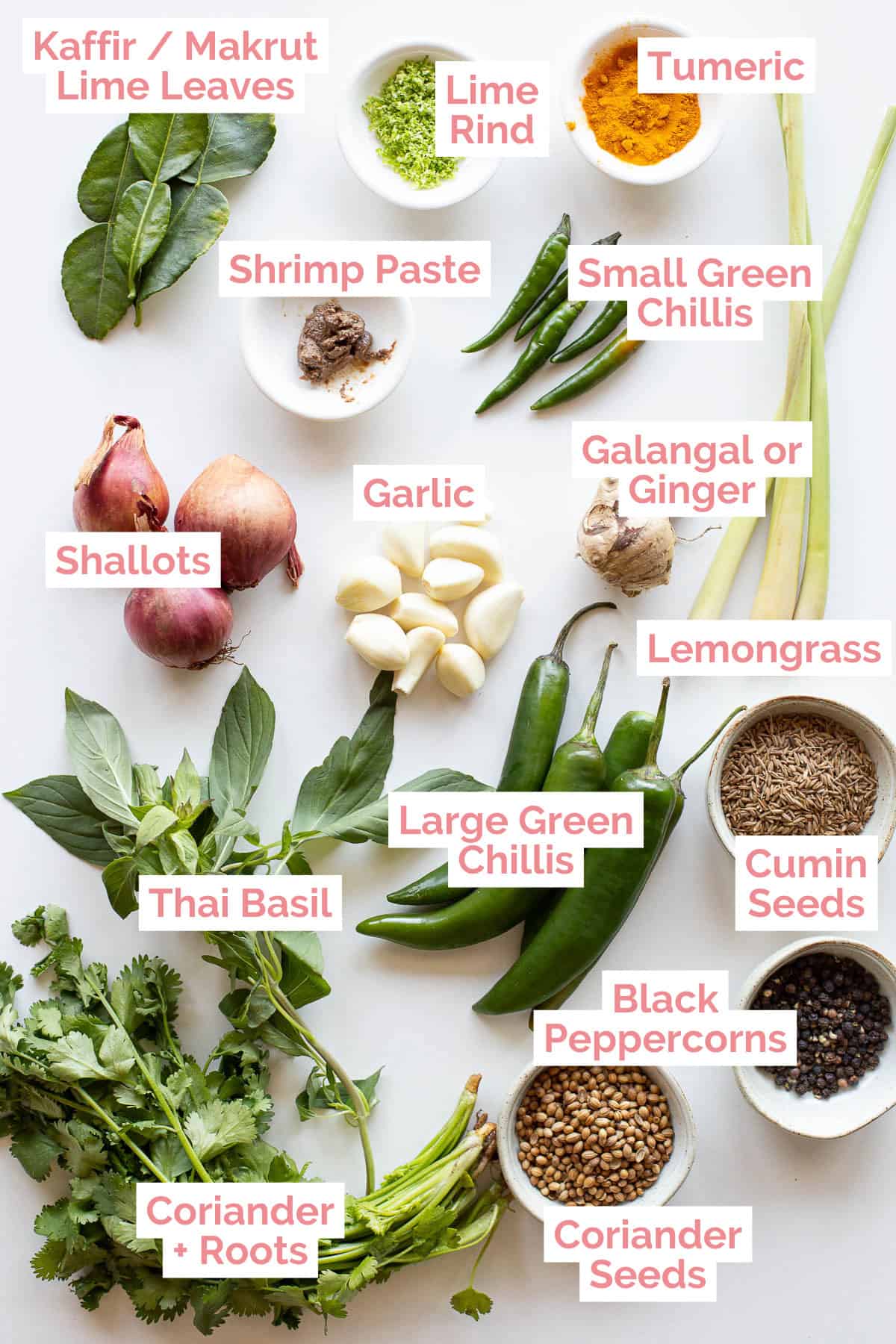
Let’s Get Cooking!
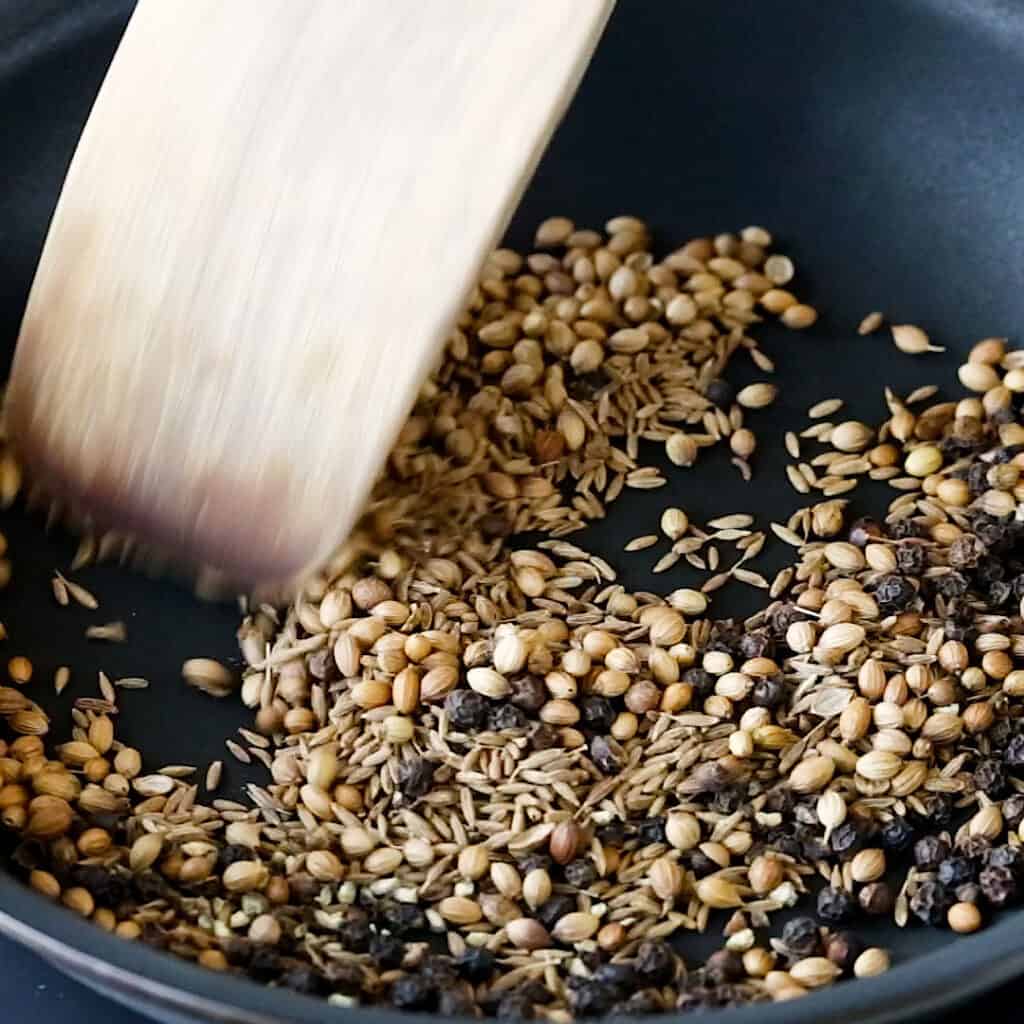
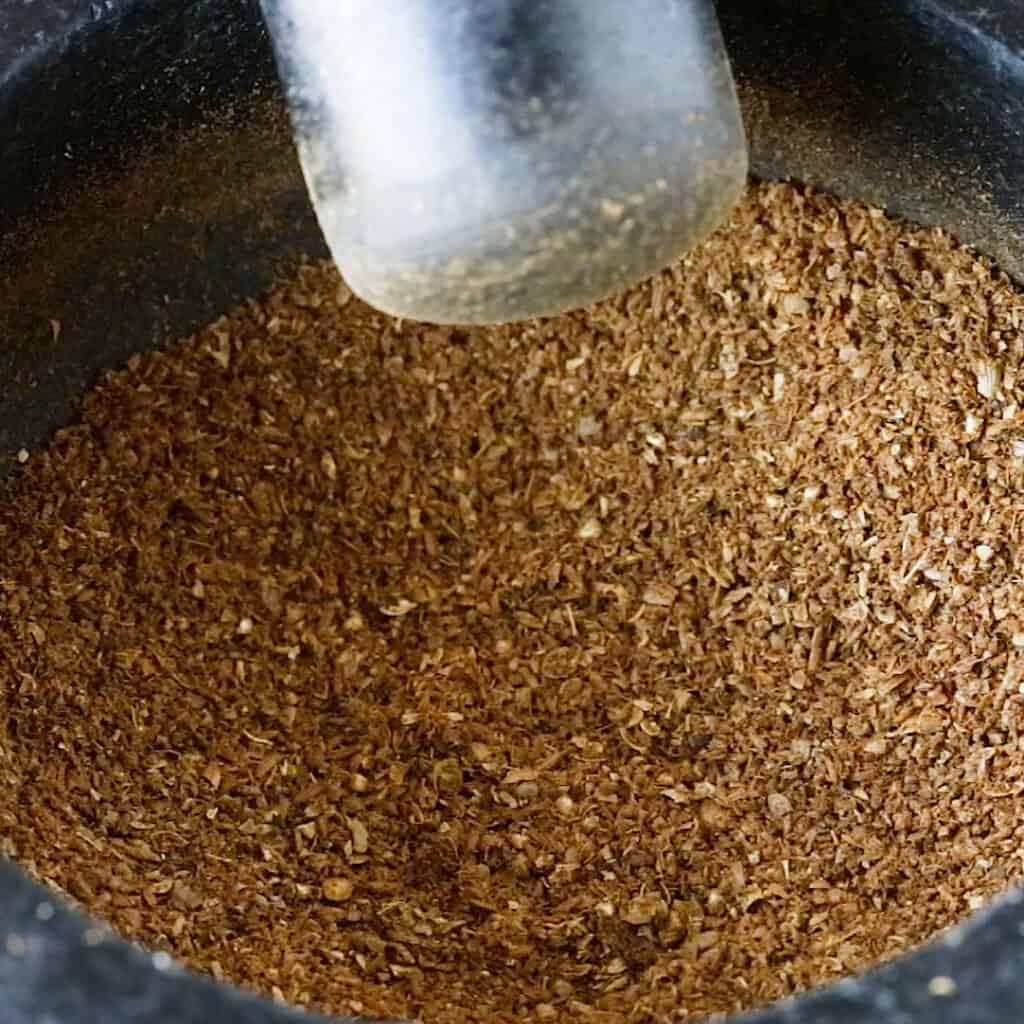
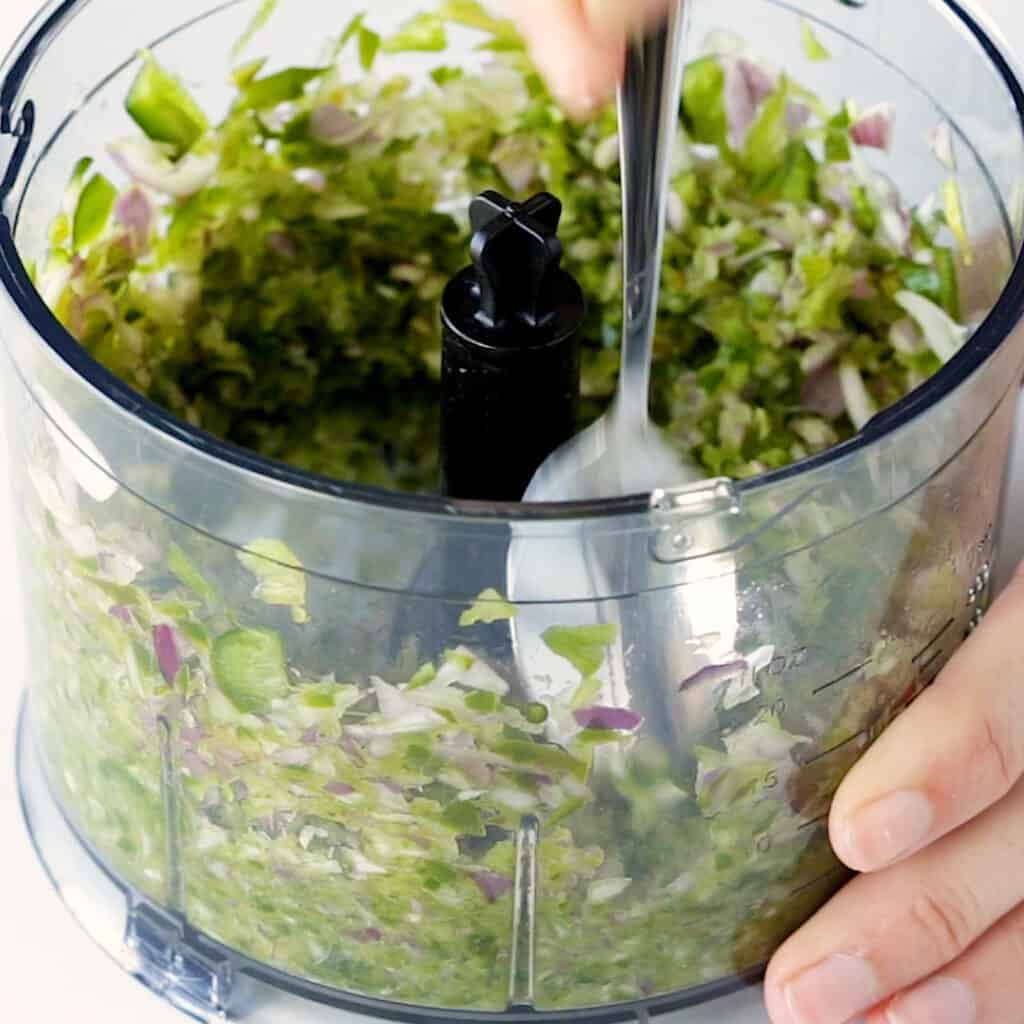
- Dry toast the cumin seeds, coriander seeds and black peppercorns in a small frying pan over medium heat for 2-3 minutes. Move the spices around constantly for an even toast.
- Pour into a mortar and pestle and grind into powder (or use a nut and spice / coffee grinder).
- Start with the biggest ingredients first. Place your large green chillies, small green chillies and shallots into the blender. Pulse until chopped fine for around 10 seconds. Scrape down the sides using a spoon or spatula.
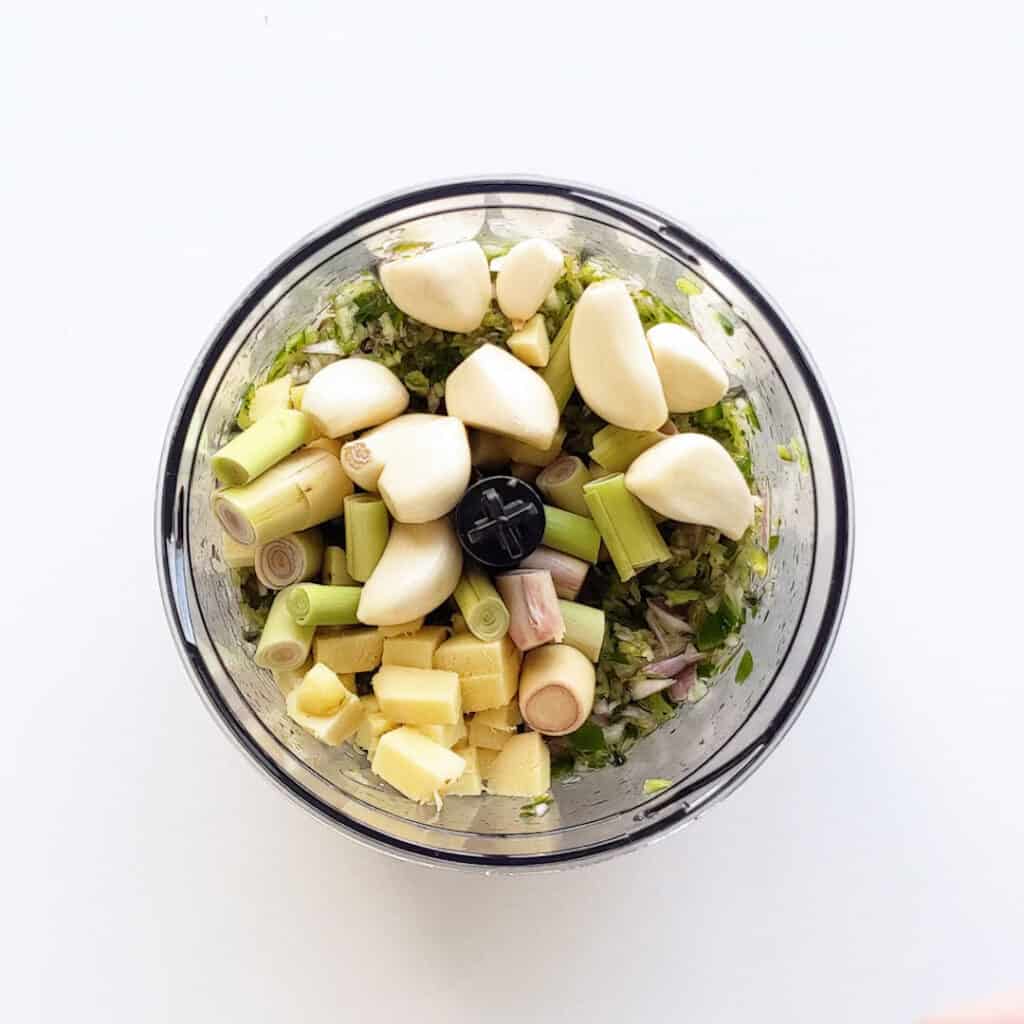
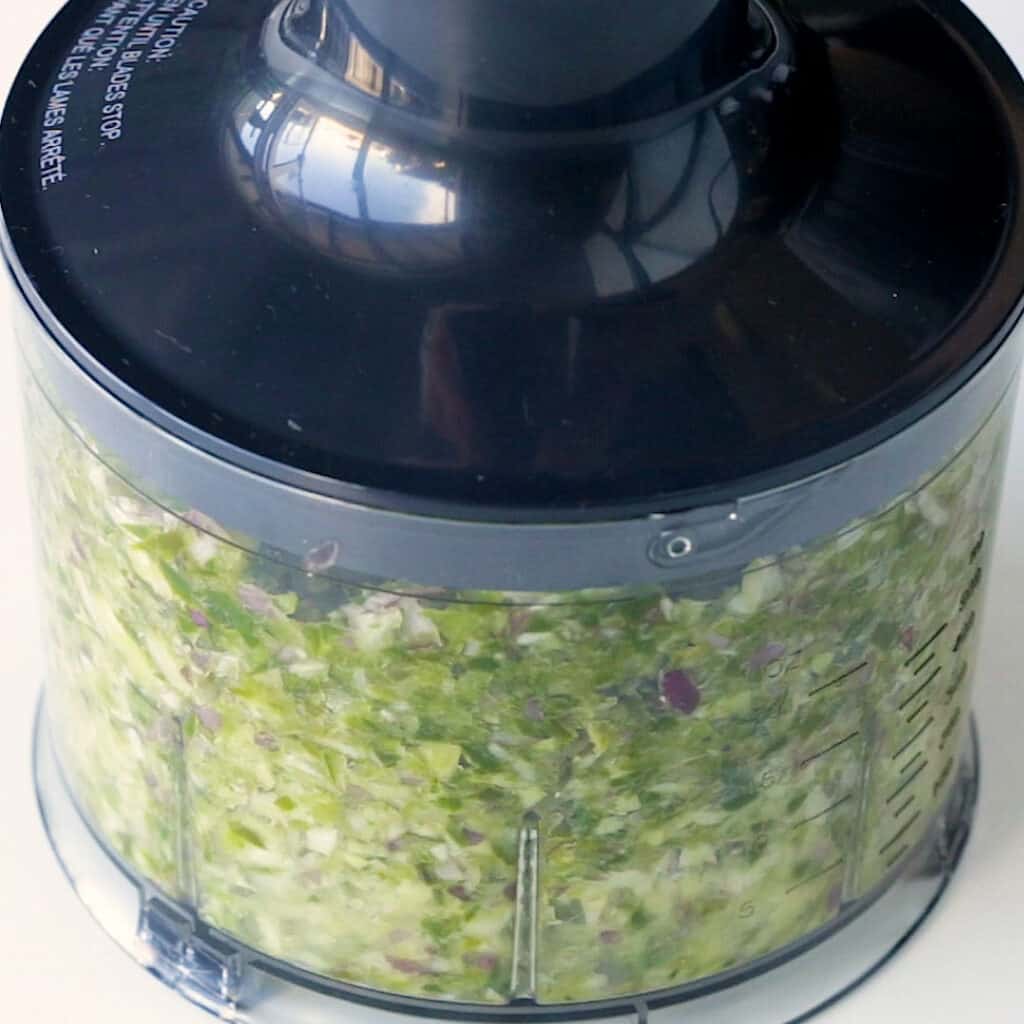
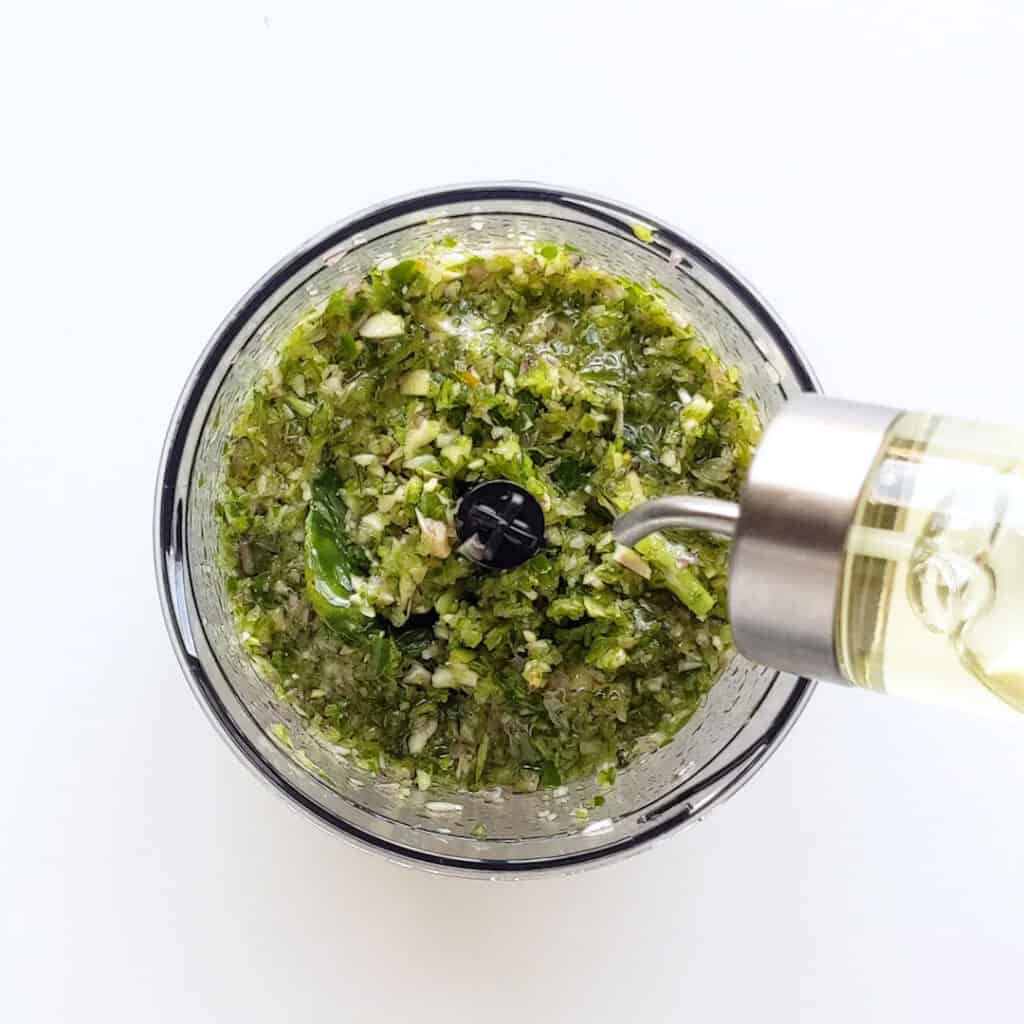
- Next add the galangal (or ginger), lemongrass, garlic, coriander roots and makrut / kaffir lime leaves.
- Pulse for another 10 seconds and scrape down again.
- Now it’s time to add your vegetable oil to help it turn into paste.
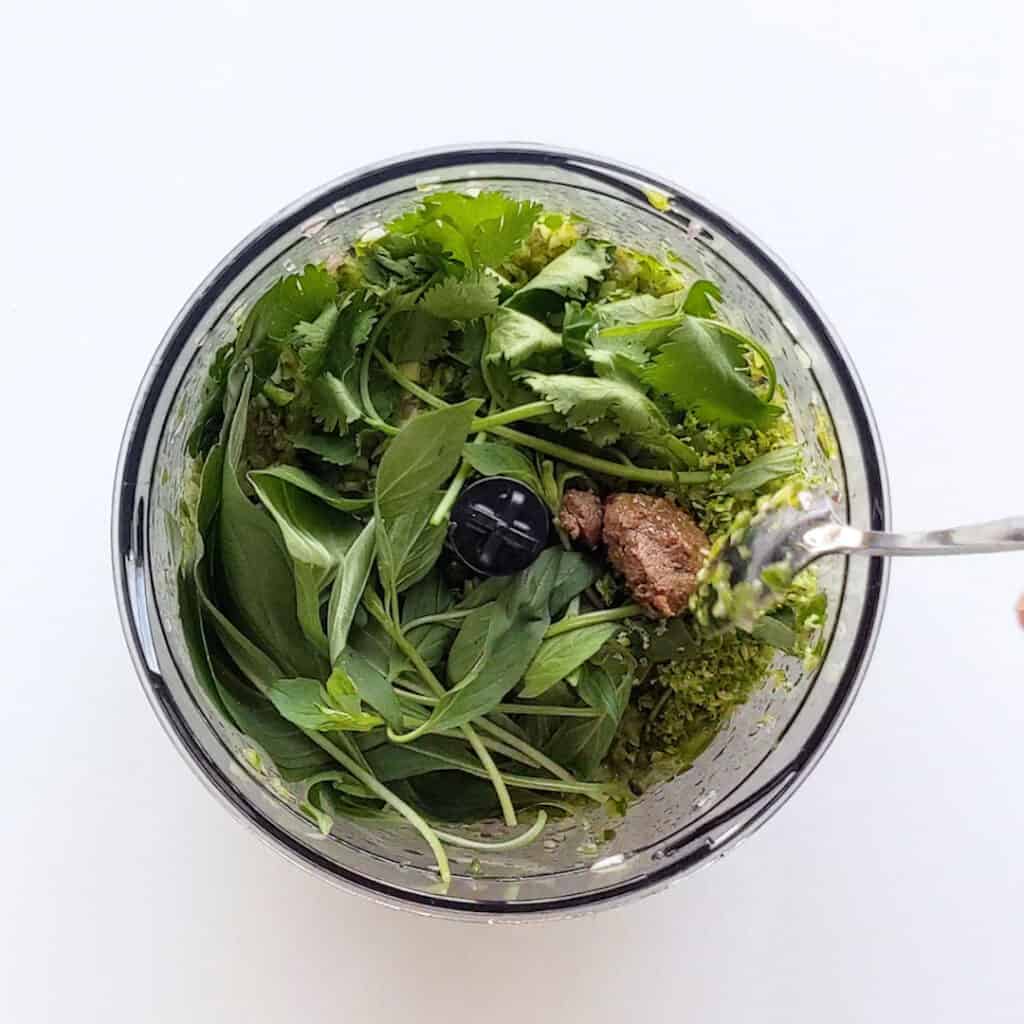
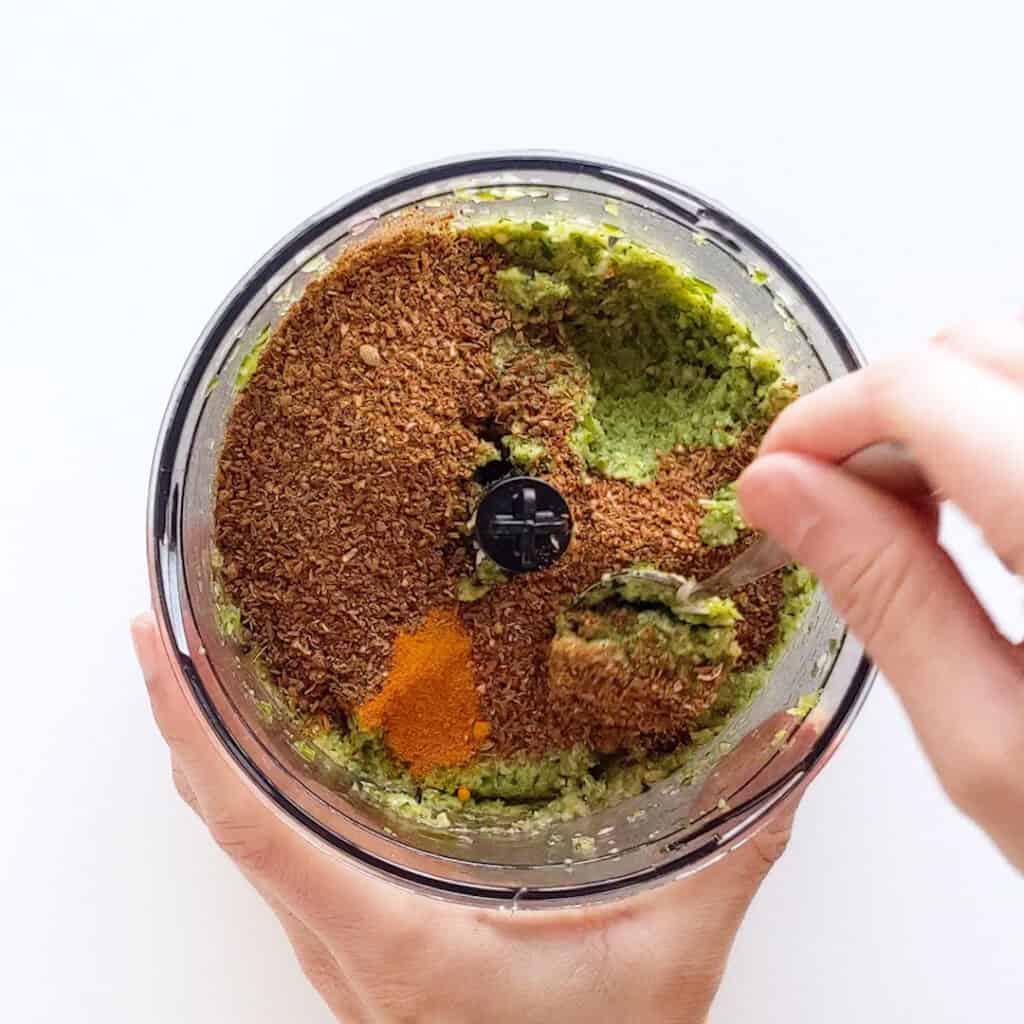
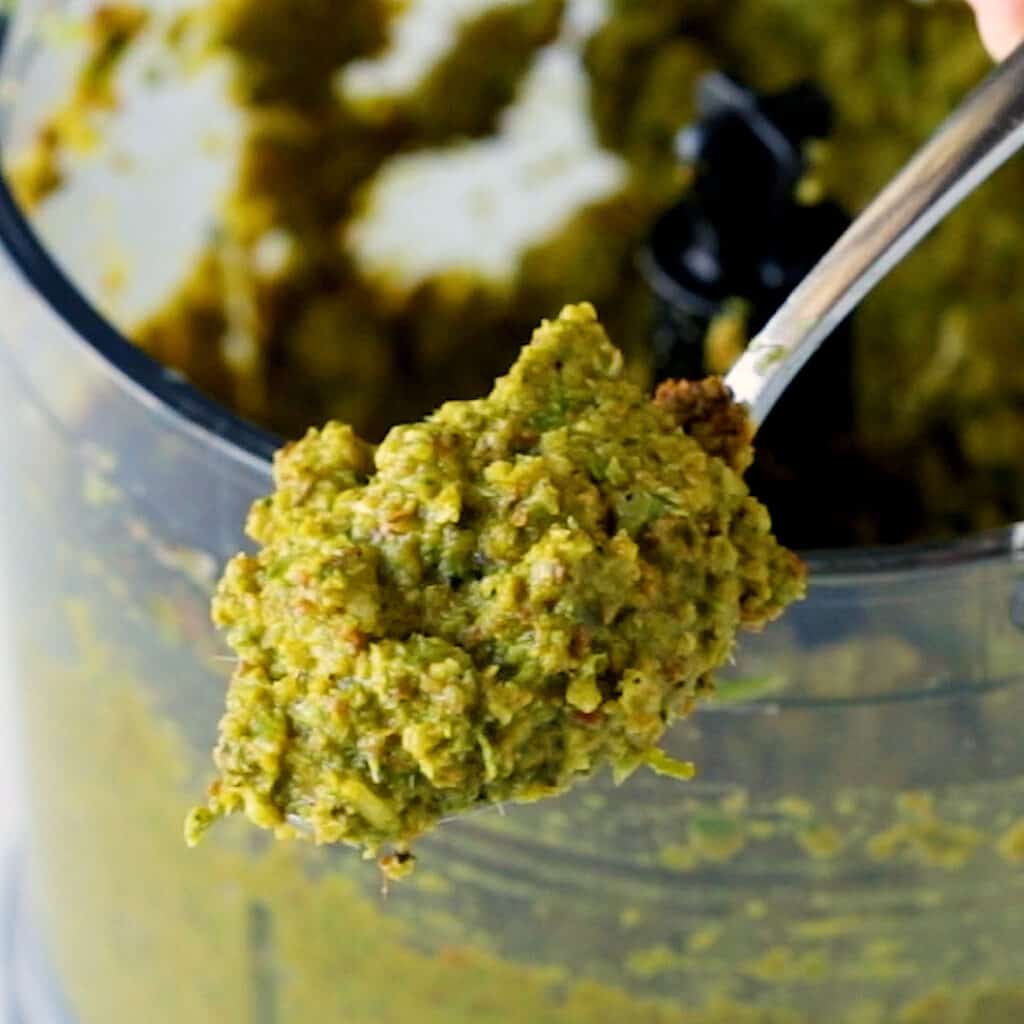
- Add in the coriander leaves, Thai basil leaves, Thai makrut / kaffir lime zest and shrimp paste. Pulse and scrape down again, then blend until you see the paste start to churn itself and get smoother, around 10-15 seconds.
- To finish, add the turmeric powder and toasted and ground spices. Stir into the paste slightly to avoid it spraying everywhere. Blend for 5-10 seconds until completely mixed through your paste. Scrape down and blend one last time for 5 seconds or so and you’re ready to go!
- Use immediately as a base for Thai green curry, or portion it out into 2 tbsp chunks and freeze, so you can grab them whenever you need.
Curry Paste Tips
Storage
Best used straight away, otherwise it will last for 2-3 days in the fridge in an airtight container.
If freezing, portion it out first, this will make it much easier to grab the amount you need with dinner. We recommend freezing for up to a month or two – any longer and it will start losing it’s flavour and freshness. To portion, measure out 2 tbsp of paste onto a lined baking tray or silicone ice cube tray. Partially freeze for 30 minutes, then transfer to an airtight container. This will stop the portions sticking together, and keep them easily accessible for your next curry!
FAQs & Troubleshooting
We use Mae Ploy or Maesri brands for green curry paste if we don’t have any homemade on hand. May Ploy tends to come in larger containers, but it lasts for a long time so it’s handy to keep in the fridge. Maesri paste is available in convenient small size cans suitable for 1-2 batches of curry depending on your spice tolerance.
Yes, very easily, Swap out the belacan / shrimp paste for 1 tsp of salt or 1 tsp of vegan fysh sauce to still give it an umami hit.
What else can I use this curry paste with?
- Use it as a quick swap for red curry paste in your favourite curry recipes.
- Add a small amount to marinades and dipping sauces for a burst of heat and flavour.
- Or try adding it to stir fries such as nasi goreng (fried rice), mee goreng (fried noodles) for a whole new experience. Stir fry in a little oil first to release the flavour, then continue with the stir fry recipe.
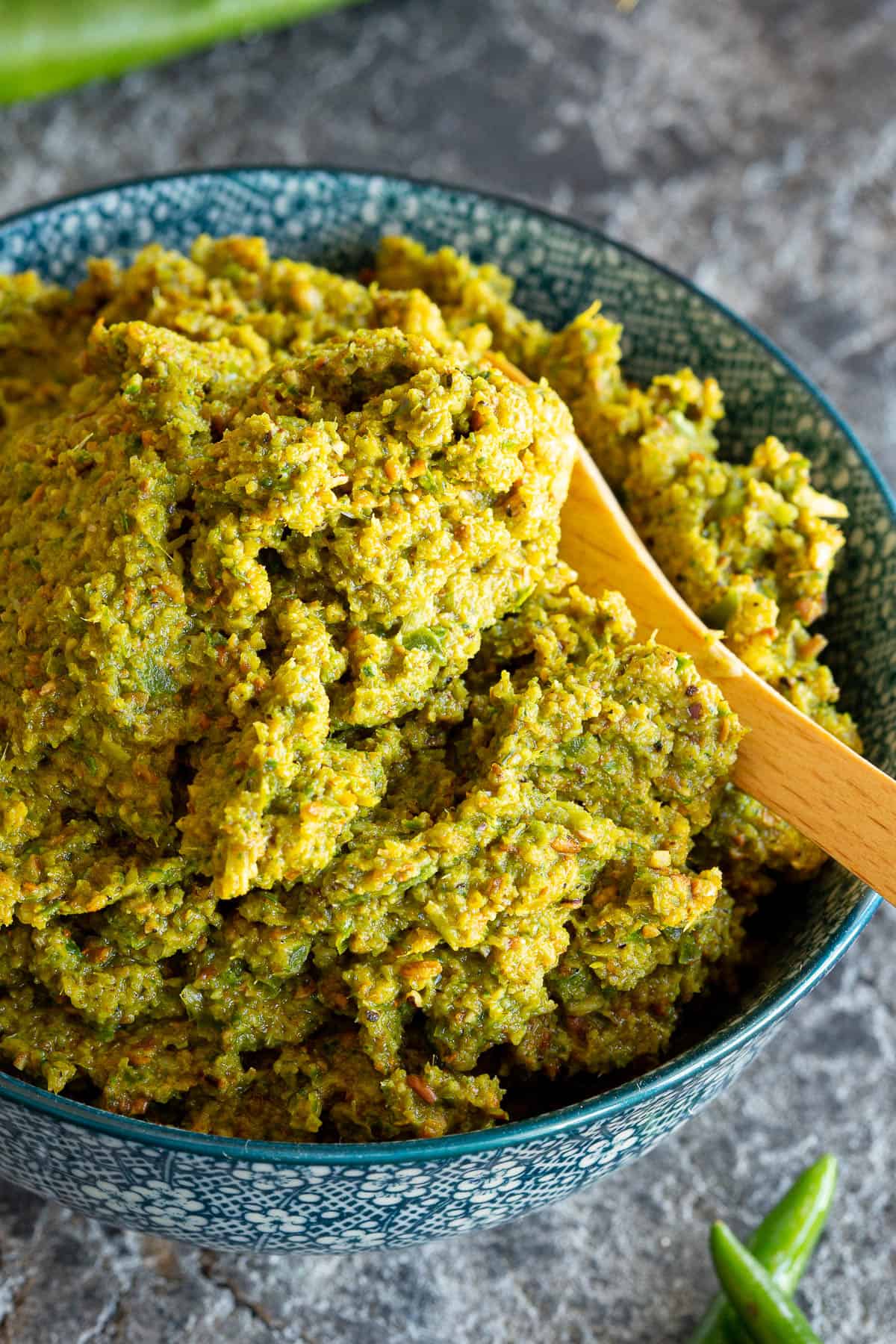
Try these amazing recipes next:
★ Did you make this recipe? Please leave a comment and a star rating below!
Ingredients
- 2 tbsp coriander seeds
- 2 tbsp cumin seeds
- 1 tbsp black peppercorns
- 3 lemongrass white stems only, chopped into chunks
- 2.5 cm galangal fresh, sub ginger
- 3 cm turmeric fresh, sub 3 tsp turmeric powder
- 2 tsp Thai makrut / kaffir lime zest grated, sub regular lime
- 4 coriander root chopped
- 6 Thai makrut / kaffir lime leaves
- 5 large green chillies fresh and deseeded
- 5 small green chillies fresh and deseeded (medium spice level), such as bird's eye
- ¼ cup coriander leaves around 30
- ¼ cup Thai basil leaves around 20
- 5 shallots or ½ red onion, whole or sliced in half for larger ones
- 10 garlic whole cloves
- 2 tsp shrimp paste sub fish sauce or 1 tsp salt / fysh sauce for vegan
- 2 tbsp vegetable oil
Instructions
For toasting the spices
- Dry toast the cumin seeds, coriander seeds and black peppercorns in a small frying pan over medium heat for 2-3 minutes. Move the spices around constantly for an even toast.2 tbsp coriander seeds, 2 tbsp cumin seeds, 1 tbsp black peppercorns
- Pour into a mortar and pestle and grind into powder (or use a nut and spice / coffee grinder).
For making the paste in a blender
- Start with the biggest ingredients first. Place your large green chillies, small green chillies and shallots into the blender.5 large green chillies, 5 shallots, 5 small green chillies
- Pulse until chopped fine for around 10 seconds. Scrape down the sides using a spoon or spatula.
- Next add the galangal (or ginger), lemongrass, garlic, coriander roots and Thai makrut / kaffir lime leaves. Pulse for another 10 seconds and scrape down again.3 lemongrass, 2.5 cm galangal, 4 coriander root, 10 garlic, 6 Thai makrut / kaffir lime leaves
- Now it’s time to add your vegetable oil to help it turn into paste. On top, add in the coriander leaves, Thai basil leaves, Thai makrut / kaffir lime zest and shrimp paste. Pulse and scrape down again, then blend until you see the paste start to churn itself and get smoother, around 10-15 seconds.2 tsp Thai makrut / kaffir lime zest, ¼ cup coriander leaves, ¼ cup Thai basil leaves, 2 tsp shrimp paste, 2 tbsp vegetable oil
- To finish, pour in your turmeric powder and toasted and ground spices. Stir into the paste slightly to avoid it spraying everywhere. Blend for 5-10 seconds until completely mixed through your paste. Scrape down and blend one last time for 5 seconds and you’re ready to go!3 cm turmeric
- Use immediately as a base for your Thai green curry, or portion it out into 2 tbsp chunks and freeze, so you can grab them whenever you need. It’ll also last in the fridge in an airtight container for around two weeks.
Video
Recipe Notes
- Top Tip: Sometimes the hardest part about making green curry paste from scratch is finding the ingredients! If you can’t get them at your local supermarket, check out your nearest Asian grocery store.
Nutrition
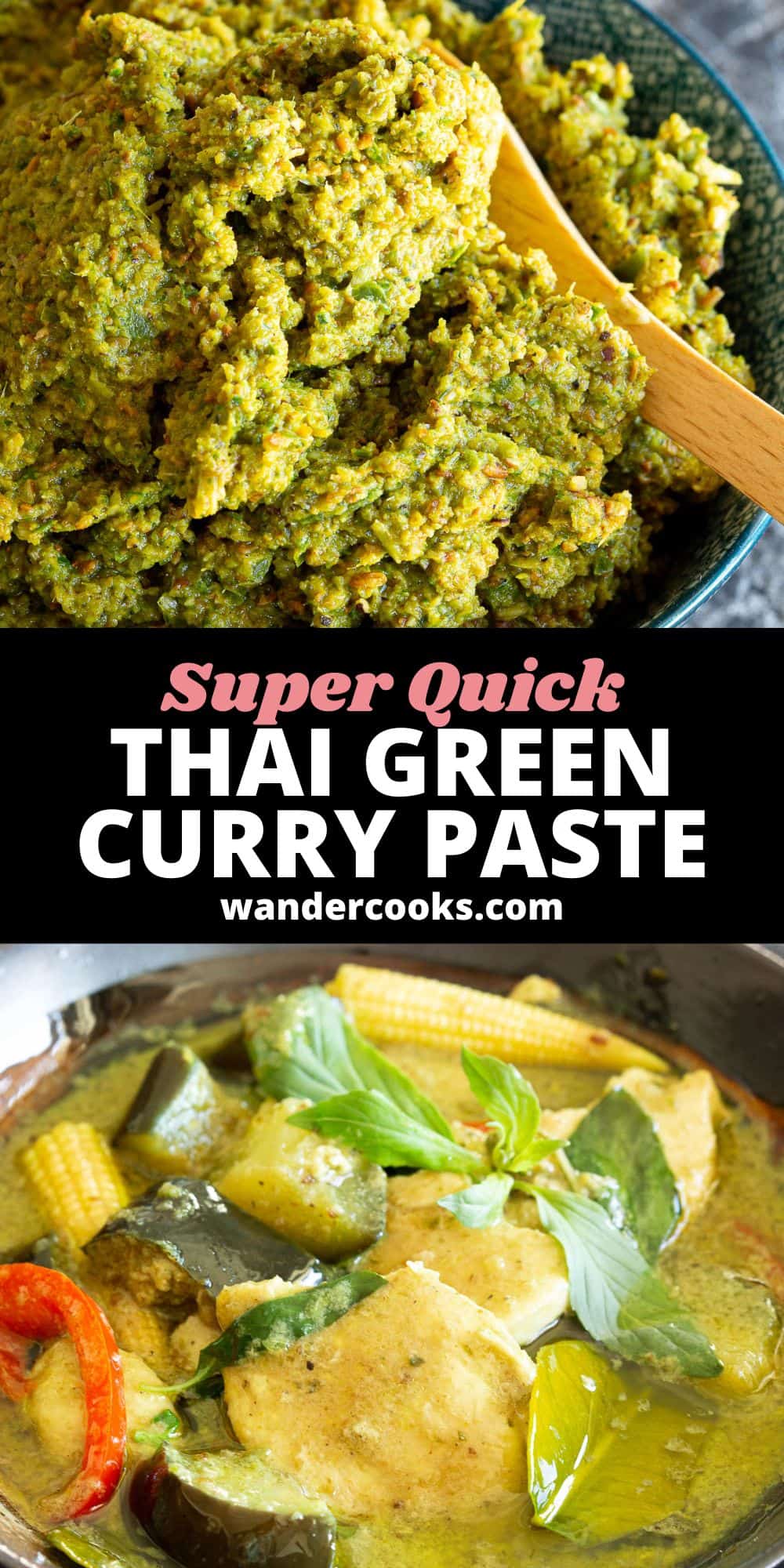

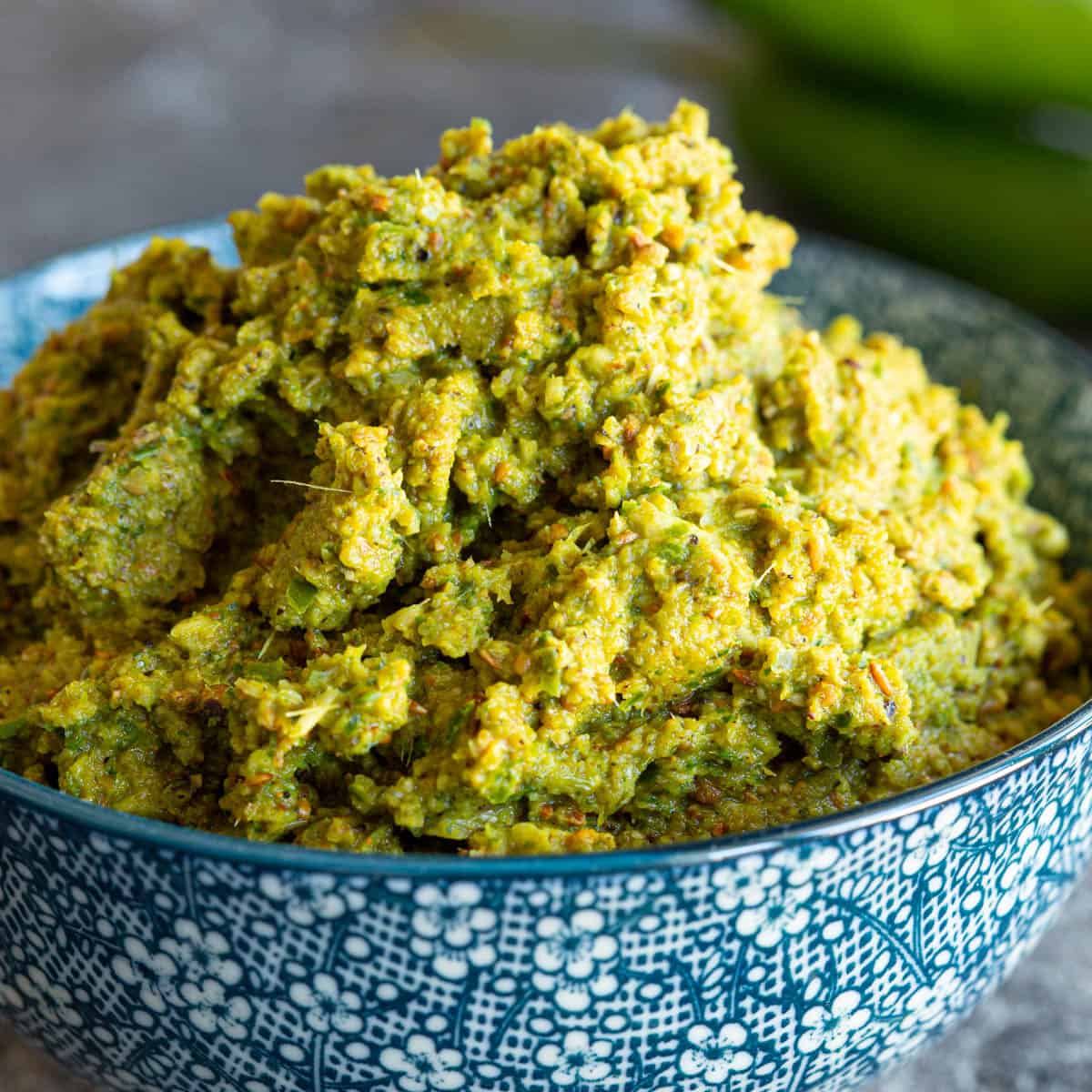



No Comments